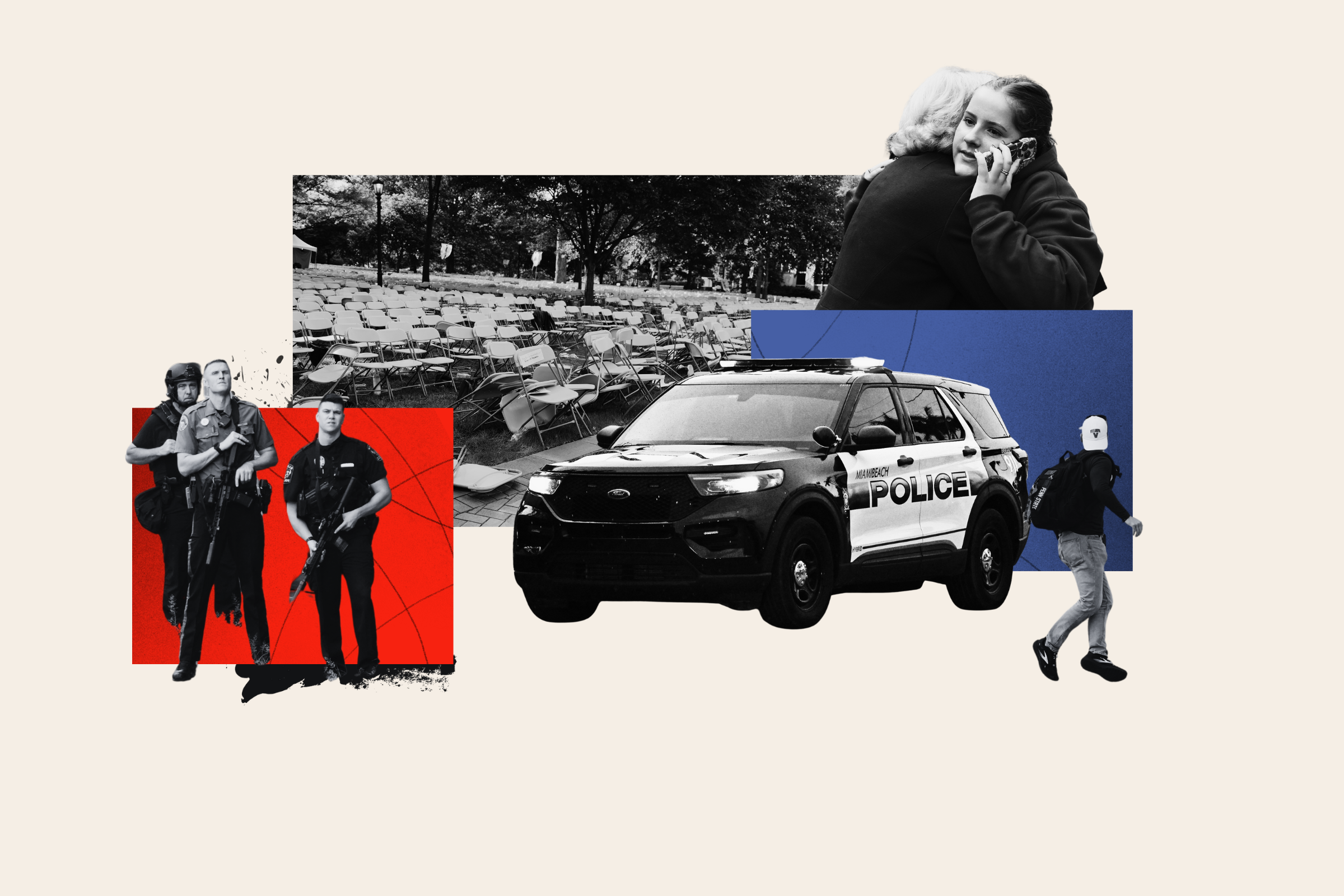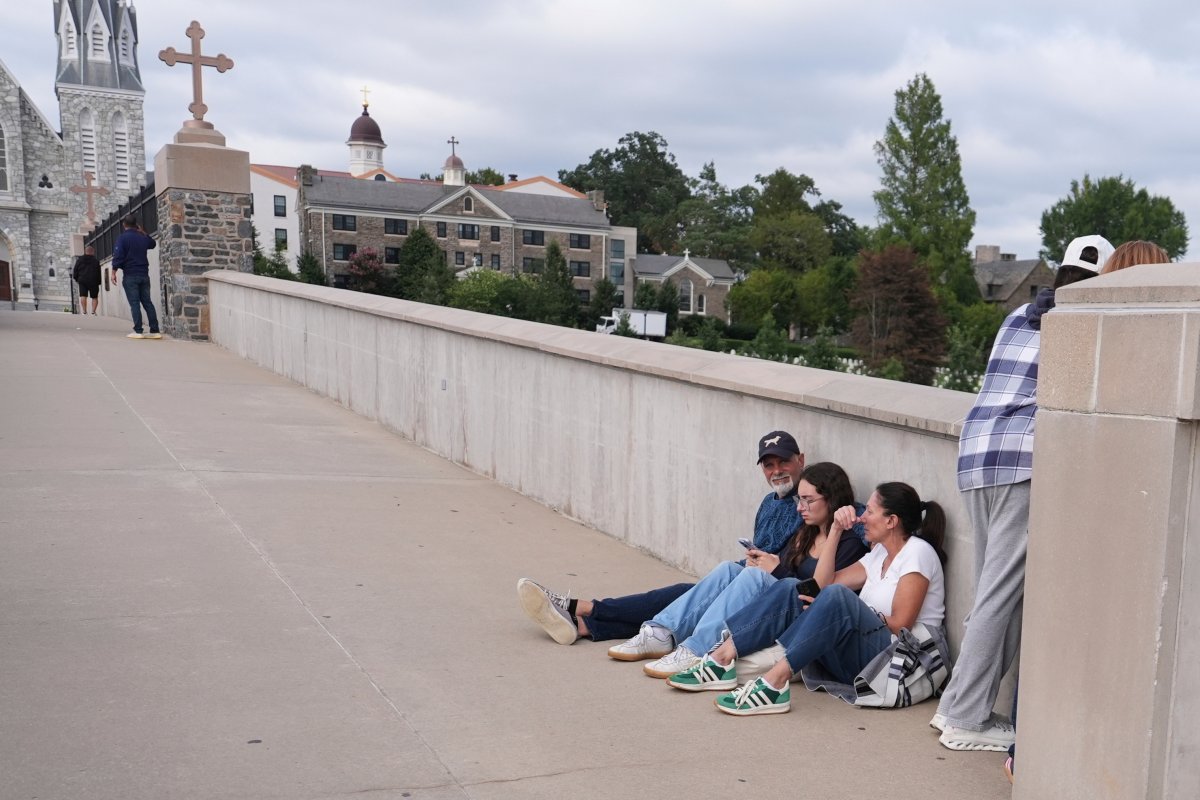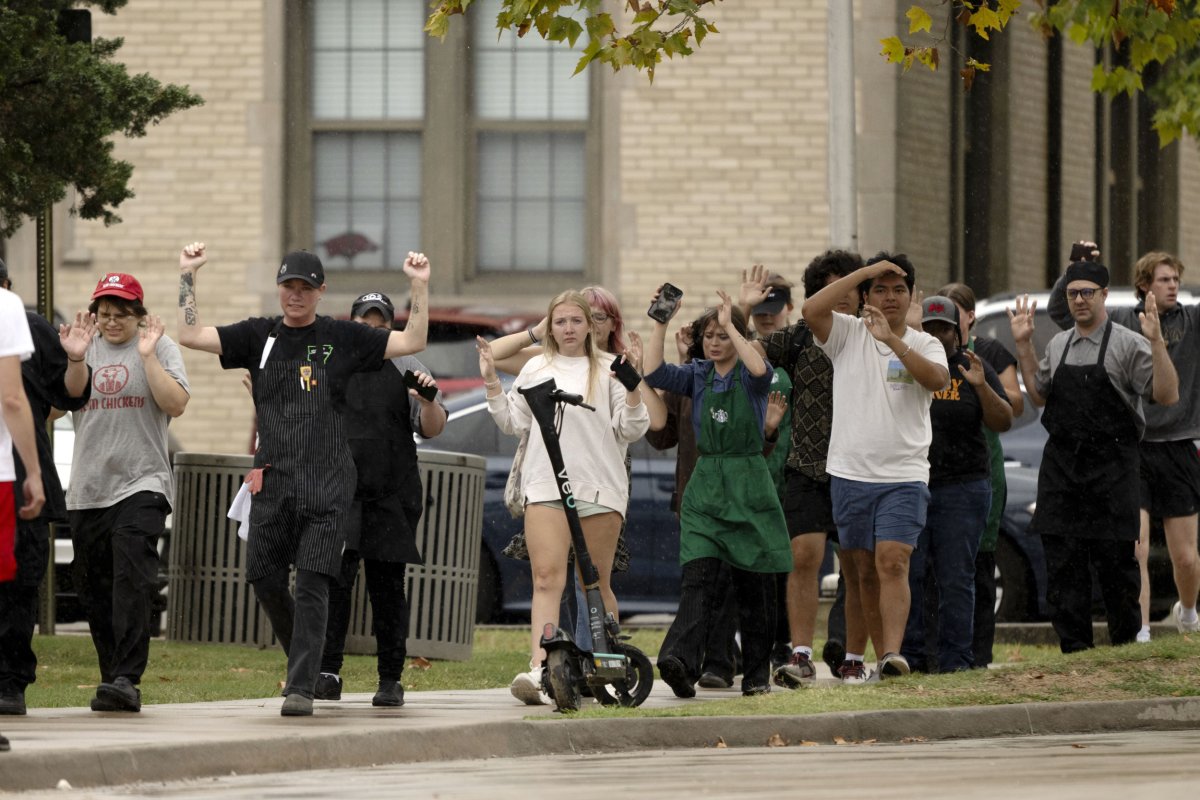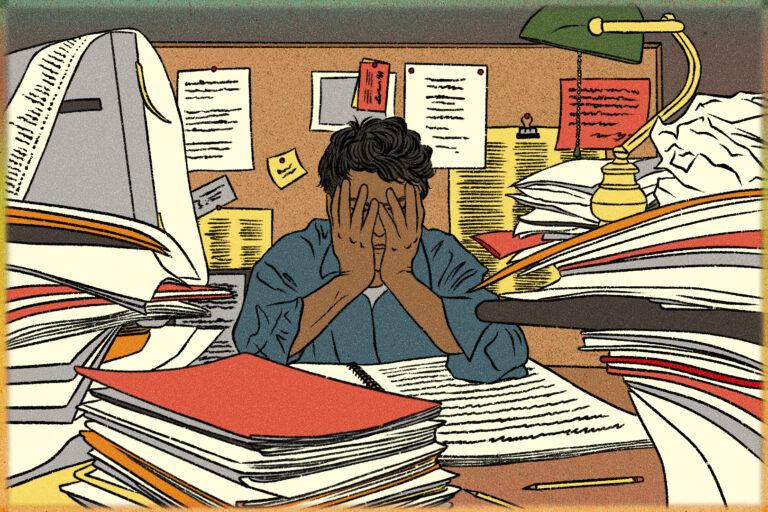
Students should stay the course and report any suspicious activity as swatting incidents continue disrupting campuses across the country, FBI officials said.
False reports of active shooters have rocked at least 10 colleges and universities since Thursday, including pulse-pounding incidents at Villanova University in Pennsylvania and the University of Tennessee at Chattanooga, where students and staff scurried for cover as authorities frantically searched for non-existent threats.
A second scare at Villanova on Sunday also turned out to be a hoax, as well as other recent reports of gunmen or shots fired at Iowa State University, the University of Arkansas in Fayetteville, Northern Arizona University, the University of South Carolina, Doane University, the University of New Hampshire, the University of Colorado Boulder and Kansas State University.

Newsweek Illustration/AP Newsroom/Getty Images
FBI officials declined to comment on the specific incidents, but acknowledged an “increase in swatting events” across the country as millions of young men and women start their semesters.
“Knowingly providing false information to emergency service agencies about a possible threat to life drains law enforcement resources, costs thousands of dollars, and most importantly, puts innocent people at risk,” the FBI told Newsweek in a statement late Monday.
The FBI, which coordinates with state and local law enforcement agencies to investigate the false reports, created a database in 2023 to gather details on swatting hoaxes. Thousands of incidents have been submitted.
“We work closely with our law enforcement partners to determine their credibility, share information, and take appropriate investigative action,” the bureau said in a statement. “As always, we encourage members of the public to remain vigilant and immediately report anything they consider suspicious to law enforcement.”

AP Photo/Matt Slocum
Carla Hill, senior director of investigative research at the Anti-Defamation League’s Center on Extremism, said swatting incidents are often designed to harass targets or disrupt specific events like school sessions or religious services. What motivates perpetrators remains unknown in many cases, she said.
“In the current climate, where active shooter scenarios have become disturbingly common, this tactic is especially traumatizing in a school setting,” Hill said. “Its continued use is deeply troubling and represents a serious misuse of first-responder resources.”
Swatting, which dates to the 1970s, has evolved in recent years as new technology enables more anonymous methods. Some offenders even advertise “swatting-for-hire” services on social media, with payments accepted via cryptocurrency, Hill said.
A screenshot of an undated Telegram message provided by Hill showed bomb threats or swatting services offered for as little as $40, including a free recording of the call and personalized scenarios. School closures cost $75, while $50 will get buyers “extreme swattings,” where federal agents will purportedly handcuff the intended target and search their home.

AP Photo/Michael Woods
“Negotiated prices for famous people and targets such as Twitch streamers,” the post read.
The estimated 400 swatting reports in 2011 more than doubled to 1,000 by 2019 and more than 800 school swattings were recorded between January 2023 and June 2024 alone, according to the K-12 School Shooting Database.
Swatters typically conceal their identities by relaying threats through online crisis counselors in hopes that the individual will contact 911 on their behalf, or use software to call from a computer while using a virtual private network, Hill said.
Identifying and arresting offenders can be especially difficult since swatters can target locations anywhere in the world, likely contributing to the growing number of hoaxes currently impacting U.S. colleges and universities, she said.
“I expect the activity to continue because it does not require much technical expertise, there is limited legal consequence, it is monetized in the black market and trolling is at an all-time high,” Hill told Newsweek.
David Riedman, a researcher who created the K-12 School Shooting Database, tallied 853 swatting incidents at U.S. schools between January 2023 and June 2024, but stopped the practice as the hoaxes started occurring less frequently. The recent rash may prompt him to “fire up the tracking again,” he said.
“The best way to deal with swatting is for police to not respond,” Riedman told Newsweek. “This seems difficult but if there is an actual school shooting, there are hundreds of 911 calls. A large police response is exactly the outcome that swatters are looking to achieve. If a police department gets a single call about a school shooting in progress, they should call the school before sending hundreds of officers to campus. During swatting hoaxes, school officials usually have no idea there is a threat until police officers start showing up.”




